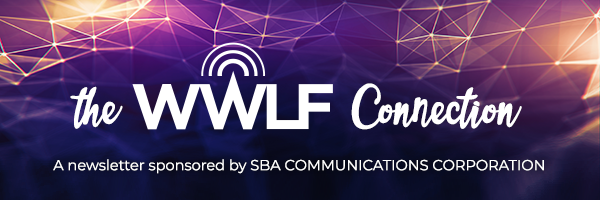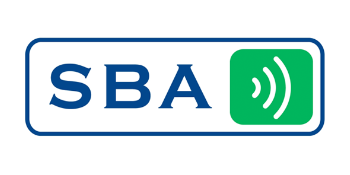Under the best of circumstances, many people find conflict resolution challenging. And in 2020, none of us are under the best of circumstances.
“Before now, people's attitudes and deep feelings about conflict wouldn’t emerge quite as quickly,” says Elaine Yarbrough, PhD, Founder and President of The Yarbrough Group. This consulting group provides a range of services world-wide for Developing the Human Side of Organizations to Ignite the Genius of Systems, Teams and People. One of her specialties is conflict management.
“Now, stakes are higher. People are scared and worried, so every negative default about conflict comes faster,” she said. “And people have a hard time thinking ‘and/both’. They think ‘either/or’. This mindset, coupled with people’s natural defaults, impedes their clarity of thinking.
“It makes conflicts worse. When we're in that state of reaction, our brain can't access its creative and complex problem-solving centers.”
Yet even with the challenges we’re facing, basic conflict management tools still apply.
Tool #1. Confirm there’s a conflict
This seems obvious, but even under normal circumstances people have a hard time distinguishing between an annoyance or a confrontation and a conflict.
“Let’s say you and I both want respect and don’t think we’re getting it,” explains Yarbrough. “That’s not really a conflict because we can both have respect. And because we’re different, we probably want it in different ways. People think differences equal conflict, but usually differences are the way out of the conflict.”
True conflicts come about when your interests and the other party’s interests are at cross purposes—or you think they are. Which leads to the next step.
Tool #2. Investigate your interest
You know what you want. A raise. A promotion. Your kid to put away her shoes. But why do you want it?
“What you want is your position. Why you want it is your interest,” explains Lindsay Yarbrough Burr, CEO of The Yarbrough Group. Burr specializes in multi-generational workplaces and women’s leadership.
“You want the raise because you want to know you’re valued. You want the promotion because you want to know you’re a respected team member. You want the shoes put away, so your house feels like a welcoming place.”
If you aren’t sure of your interest, try asking yourself these questions: What would happen if I got this? What would happen if I didn’t? What would those things mean to me? What is that symbolic of?
“When you know your interest, you can jump into problem solving differently,” explains Burr. “If you can’t have the promotion, what else would help you feel respected?”
It’s this part—the problem solving—that’s the creative work of conflict resolution. And often if the other party understands your interest, it can help them meet it. They know you aren’t coming from a place of trying to control them.
Tool #3. Think about their interest
Speaking of control, Yarbrough says when she asks someone what they think the other person’s interests are, the answer is almost always “control.”
If you aren’t getting what you want, or think you aren’t getting what you want, you feel controlled. But what if control isn’t their motivation?
“Asking ‘What if it’s not control…what else could it be?’ is one of the most powerful tools you can use on yourself or with someone you’re coaching,” Burr says. “Often you don’t know why the other person really wants something. And the best way to know is to ask.”
Tool #4. Refill your resilience
“Resilience helps bolster your ability to stay calm, get connected, and have clarity,” says Burr. “It’s one of the keys to resolving conflict.”
Right now, though, most people's usual ways of rebuilding resilience are gone. "For some people it was going to the gym, or seeing family, or even listening to a favorite podcast during a commute,” Burr explains. “Then you add in simple activities getting much harder…grocery shopping is an ordeal now. So your depletion rate is much higher, and your refill rate is much lower.”
If you’re facing a conflict at home or work, take some time to rebuild your resilience before facing it. It’s important because more resilience leads to hope.
Tool #5. Have hope
“When people don’t have hope, they don’t believe a conflict can be resolved,” says Yarbrough. “But we’ve seen hundreds of similar conflicts solved in a lot of creative ways.”
Admittedly the hope level these days is lower. It may be difficult to imagine that conflicts you’re facing today can be solved, given this year has thrown a lot of new situations at us. Yet people are remarkably creative and inventive.
Approaching a situation with the hope and expectation that it can be resolved is a vital step in conflict resolution.
Putting the tools into practice
“There are multiple interests in a conflict,” says Yarbrough. “You gain power in a conflict by meeting the other people’s interests.”
It also helps to establish the known constraints. In this particular time period, it’s easy because the whole world is in the same situation. (Which is about the only thing that is easier now.)
So, for example, what if you need flexibility in your work hours because schools are all virtual and you have kids too young to be home alone?
“I love the phrase, ‘as we all know.’ It’s such a powerful statement, coming from a place of wisdom,” says Yarbrough. “As we all know, we're all under extra stress. As we all know, schools and daycares are closed. As we all know, we still need to make a profit…”
“You also want to be clear that everyone matters,” adds Burr. “You matter to the company and the person you’re talking with. The person you’re talking with and the company matter to you.” By doing this, you’ve established you’re all coming from the same position of having value.
Once you’ve established the constraints and set goals in a common context, you can start exploring solutions. So don’t worry if you don’t have a solution completely planned out when you go to talk to someone.
Burr explains, “There’s great power in saying, ‘Because we all know, all of these things are true, I'm going to need some temporary flexibility. What key things do we need to talk about and what structures do we need in place so that this works for all of us?’”
“Then it becomes collaborative problem solving, rather than trying to persuade someone to give what they don’t want to give,” says Yarbrough. “Now you’re looking at how many ways can we solve this? And that’s the best it gets in conflict resolution… when people meet each other and begin solving the problem.”
To see more by Elaine Yarbrough, you can read her chapter "Transformative Conflict Matrix: A Guide for Practitioners" in OD Practitioner (Page 72), and her book with William Wilmot, Artful Mediation: Constructive Conflict at Work, available on Amazon or you can email ignite@yarbrgoup.com.
For more about the Yarbrough Group, check out their website, their blog "Catch Fire", or follow the company on LinkedIn.


